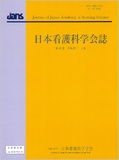Japanese
English
- 販売していません
- Abstract 文献概要
- 参考文献 Reference
- サイト内被引用 Cited by
要旨
目的:本研究は,認定看護管理者(CNA)の偏在是正と養成の普及推進のため,CNA所属施設の分布及び所属の有無と関連する二次医療圏や施設特性を明らかにすることを目的とした.
方法:本研究は,5つの公開データを施設名で連結し,CNA教育機関所在医療圏と地域分類に区分した地図にCNA所属施設と非所属施設をプロットし地図を作成した.さらに,二次医療圏特性とCNA所属施設数との関連,施設特性とCNA所属の有無との関連を確認するため二変量解析を実施した.
結果:CNAがいない二次医療圏はほとんどが過疎地域型医療圏であり,教育機関がない医療圏では有意に圏内のCNA所属施設数が少なかった(p<.001).施設レベルでは,病床数,教育機関までの距離,開設者,DPC区分が施設のCNAの有無と関連していた(p<.001).
結論:地域特性と施設特性による全国のCNA分布の偏在状況が確認された.
Aim: This study aimed to identify the nationwide distribution of certified nurse administrators (CNA), and secondary healthcare area and facility characteristics related to their affiliation.
Methods: We used five open databases. Two national maps were created by adding CNA affiliation/non-affiliation information to the map by secondary medical region characteristics. Furthermore, bivariate analyses (t-test, analysis of variance, and chi-square test) were conducted to confirm the association between secondary medical area characteristics and the number of facilities with CNA affiliation, and between facility characteristics and the presence of CNA affiliation.
Results: The medical areas with no CNAs within the secondary medical area were primarily rural medical areas, and medical areas with no educational institutions had significantly fewer CNAs within the area (p<.001). At the facility level, number of beds, distance to educational institution, establisher, and Diagnosis Procedure Combination (DPC) classification were associated with whether the facility had a CNA (p<.001).
Conclusion: The distribution of CNAs nationwide was uneven according to regional and facility characteristics; it is necessary to implement programs for education and dissemination that will correct the uneven distribution of CNAs.
Copyright © 2023, Japan Academy of Nursing Science. All rights reserved.


